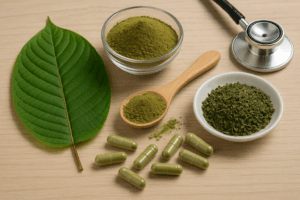Addiction takes hold of our brains in several ways — and is far more complex and less forgiving than many people realize. There are stages of addiction, withdrawal, and recovery. When it comes to opioids, more than 2 million Americans abuse them, according to the National Institute on Drug Abuse and every day, 90 Americans die by opioid overdose.
Opioids cause addiction because they trick your body and brain into becoming reliant on them. They make your brain believe the drug is necessary for survival. This dependency normally begins with prescription painkillers, as opioids are used to block pain and have a side effect of euphoria. As your body begins to build tolerance to your prescription, your brain starts sending signals of wanting more to feel the same pain-killing effect.
While not all prescription opioids will lead to addiction, everyone taking them should follow their doctor’s orders and use them with care.
What Are The Signs Of An Opioid Addiction?
If you’re worried that you or a loved one may be addicted to a substance such as opioids, there are a signs you can look for, including:
- Mixing with different groups of people or changing friends
- Spending time alone and avoiding time with family and friends
- Losing interest in activities
- Not bathing, changing clothes or brushing their teeth
- Being very tired and sad
- Eating more or less than usual
- Being overly energetic, talking fast and saying things that don’t make sense
- Being nervous or cranky
- Quickly changing moods
- Sleeping at odd hours
- Missing important appointments
- Getting into trouble with the law
- Attending work or school on an erratic schedule
- Experiencing financial hardship
Every addiction is unique. Some signs may be subtle, while others can be drastic. If you want to take control of your addiction or get help for a loved one, there are plenty of resources you can use.
Does Opioid Addiction Have Stages ?
Not every addiction will happen overnight. In fact, many are caused overtime as the individual’s brain becomes more and more dependent on the drug.
Alvernia University conducted research on the stages of addiction and outlined them. We broke them down further.
First Use
Every addiction starts with the first time someone uses the drug of choice. As we stated above, the first use does not always lead to addiction. The first use is simply the first time someone tried the drug or took their medication.
Regular Use
After the first dose, your body will begin to grow accustomed to the drug its effects. This is known as your tolerance level. As your body’s tolerance grows, the effects of the drugs are felt less and less when taken in the same dose.
As people become regular users, tolerance begins to develop. Regular use occurs whether the individual is following their prescription or using opioids recreationally on a recurring basis. Oftentimes these individuals will begin to show the signs of addiction as the substance becomes more important in their lives, though regular use is not a sign of addiction.
If you are prescribed an opioid, continue to follow your doctor’s orders to avoid addiction.
Risky Use
Risky use is normally the stage where more drastic signs of addiction appear. As regular use deepens and their tolerance grows, users will need to start increasing their dose to feel the same effects.
They also tend to develop more risky habits. This can include driving while drunk or high, or negatively impacting one’s ability to succeed at work or school. Relationships with friends or significant others may also begin to deteriorate.
Dependence
At this stage, the individual has developed a tolerance to the substance and needs a dangerous amount of it to feel good again. If a user reaches this stage, they will likely experience withdrawal symptoms if they go too long without the drug in their system.
Withdrawal symptoms vary depending on the substance used, but common signs are as follows:
- Irritability
- Muscle cramps
- Vomiting
- Headaches
- Fevers
- Cravings for the substance
Substance Use Disorder
At this point, individuals cannot function without their substance of choice. This can lead to significant consequences, including losing their job, hurting or ending relationships, homelessness, or overdoses.
How To Stop Addiction
Addiction is powerful and can consume someone’s life. In most cases, it is dangerous and potentially life threatening to stop drug use without medical assistance. There is no shame in seeking help either.
Call Direct2Recovery today to start your or your loved ones journey to an addiction-free life. Direct2Recovery specializes in management and treatment options for substance use disorder; alcohol, opiates, heroin and other harmful substances. Their mission is to help as many patients as they can overcome addiction and begin to live life at its fullest once again.
Direct2Recovery strives to make every patient feel comfortable and genuinely welcome. Direct2Recovery uses a medication assisted option of Buprenophine/Naltrexone (Suboxone) to treat opioid addiction. They will also express the importance of addiction counseling therapy and recommend this to be part of every patient’s treatment.
If in-person treatments are not possible, Direct2Recovery offers telemedicine solutions as well.
Direct2Recovery accepts most insurances, so please call now to stay on your path of sobriety or to start your new journey to treatment.





